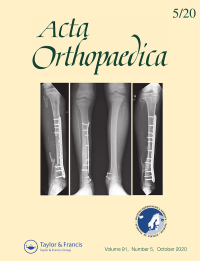Incidence of Perthes’ disease in children born between 1973 and 1993
DOI:
https://doi.org/10.1080/17453674.2016.1227055Abstract
Background and purpose — The incidence of Perthes’ disease as reported in the literature varies widely between and within countries. The etiology of the disease is still unknown. Both environmental and genetic factors have been suggested to play a part in either causing the disease or increasing the susceptibility of an individual. We determined the incidence of Perthes’ disease in Sweden and investigated possible relationships to parental socioeconomic status, ethnicity, marital status, mothers’ age when giving birth, parity, number of siblings, and smoking habits. Patients and methods — Six Swedish population-based registers were used, together covering all children born in Sweden from 1973 through 1993. Results — The incidence of Perthes’ disease in Sweden was 9.3 per 100,000 subjects. The ratio between boys and girls was 3.1:1. The educational level of the father and the mother of a child with Perthes’ disease was lower than in the controls. The incidence was lower when the fathers were in the highest income bracket (above the 90th percentile). A higher proportion of parents of Nordic lineage had children with Perthes’ disease than parental pairs with one or both who were not of such lineage. Interpretation — This study confirms that there is an association between the incidence of Perthes’ disease and the socioeconomic status of the parents.Downloads
Download data is not yet available.
Downloads
Published
2017-01-02
How to Cite
Johansson, T., Lindblad, M., Bladh, M., Josefsson, A., & Sydsjö, G. (2017). Incidence of Perthes’ disease in children born between 1973 and 1993. Acta Orthopaedica, 88(1), 96–100. https://doi.org/10.1080/17453674.2016.1227055
Issue
Section
Articles
License

This work is licensed under a Creative Commons Attribution-NonCommercial 3.0 Unported License.
Acta Orthopaedica (Scandinavica) content is available freely online as from volume 1, 1930. The journal owner owns the copyright for all material published until volume 80, 2009. As of June 2009, the journal has however been published fully Open Access, meaning the authors retain copyright to their work. As of June 2009, articles have been published under CC-BY-NC or CC-BY licenses, unless otherwise specified.







